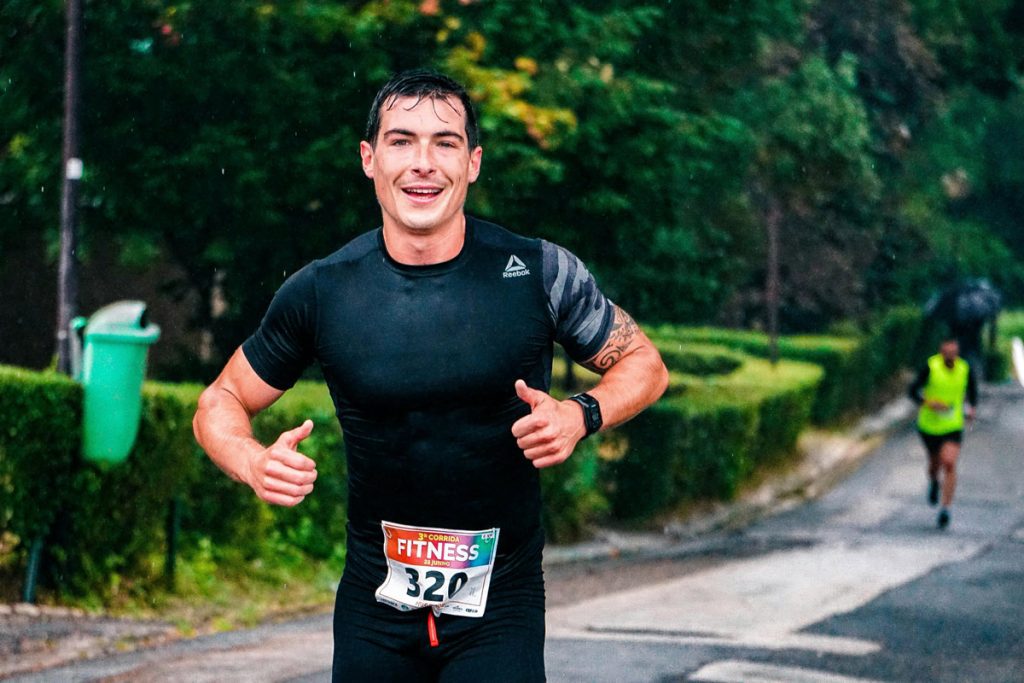If you’ve ever had a panic attack, you know the feeling — your body goes into high alert, your heart races, your breathing gets shallow, sweat breaks out, and your chest feels tight. Now think about how your body feels during a workout, especially a tough one. Your pulse is up, you’re a little breathless, your skin is warm, and you’re pushing yourself to stay in control.
It’s not a coincidence that these two experiences feel similar. This overlap isn’t just uncomfortable—it’s actually therapeutic. Exercise can work as a form of exposure therapy to help you manage panic attacks. By intentionally triggering mild versions of the same sensations, your brain learns they’re not dangerous. Over time, those sensations lose their power to trigger a negative spiral. Here’s how it works.
Exposure Therapy for Anxiety
Exposure therapy is a well-established treatment option for anxiety disorders. The idea is simple — if you avoid the things that scare you, the fear grows stronger. If you face them, safely and repeatedly, the fear loses its edge, becoming familiar.
When it comes to panic attacks, therapists sometimes use interoceptive exposure or the awareness of internal sensations. Instead of facing an external trigger like a crowded room, you deliberately recreate the internal sensations you fear — such as a racing heart or dizziness — and then ride these sensations out without panicking. Over time, your brain stops seeing those sensations as a threat.
Exercise as Built-In Interoceptive Exposure
A brisk run, cycling session, or even a set of burpees naturally produces many of the same bodily sensations as fear. The difference? In exercise, what you feel has a clear, non-threatening cause. Repeatedly experiencing these sensations reduces the effects of anxiety, especially when used in combination with medical interventions in extreme cases. It creates the perfect environment to teach your body that these symptoms can be safe.
Why Exercise Helps
When you repeatedly experience panic-like sensations during exercise — such as a raised heart rate and increased circulation that ups blood pressure — without an actual panic attack, you’re engaging in something called habituation. Your nervous system adapts, and your body’s alarm response dials down.
A recent study found that participants with high anxiety sensitivity experienced significant reductions in fear after regular aerobic exercise, which redirected their attention and reduced distraction so they could self-regulate. This effect was most potent when workouts were intense enough to raise heart rate and breathing noticeably.
Exercise helps relieve anxiety triggers by copying physiological responses that help your brain focus on control in the following ways.
Changes Your Baseline
Beyond exposure, exercise strengthens your heart, lungs, and muscles. Over time, you get healthier, react less to outside stimuli, and handle adrenaline spikes more efficiently.
For someone prone to panic attacks, this means:
- Faster recovery when anxiety spikes
- Fewer “false alarms” from everyday stressors
- More confidence in your body’s resilience
Reduces Catastrophic Thinking
If your brain has associated a fast heartbeat with danger, even a minor trigger can cause panic. Exercise helps you rewrite that script.
For example, during a workout, you might think, “My heart is pounding, but I’m okay. This is just my body working hard.” Conscious reframing undermines the usual dramatic thinking loop, placing you in control.
Boosts Emotional Tolerance
Exercise, especially high-intensity intervals, teaches you to stay present when you feel uncomfortable. That skill carries over when anxiety rises. You’ve trained your mind to say, “I can handle this,” instead of immediately trying to escape.
Regulates Endorphins and Mood
Physical activity boosts endorphins and serotonin — the feel-good neurotransmitters — which can improve mood and resilience. While exposure desensitizes you, better overall mental health reduces your experience of panic.
The Right Type of Exercise
If you’re new to using exercise as exposure therapy, start small. The goal is to achieve controlled discomfort, rather than pushing yourself into distress. Notice your fear, but remember you are safe. Your body knows what to do.
Some options include the following:
- Brisk walking or light jogging
- Cycling
- Dance or aerobics classes
- Rowing or swimming
- High-intensity interval training, once you’ve built some tolerance
Safety Considerations
Check with a healthcare professional before starting aerobics, especially if you have heart or respiratory conditions. Injury may convince your brain that exercise brings pain and trigger anxiety in the future.
During workouts, it’s best to warm up gradually to avoid sudden spikes in heart rate, practice steady breathing, and employ grounding techniques. If anxiety strikes, focus on your feet hitting the ground and count your breaths. If the sensations become overwhelming, slow down and walk, then re-engage once you feel calmer. The point is gradual exposure, not triggering panic all at once.
When to Combine Exercise With Therapy
Exercise can be a powerful self-help tool, but when you have frequent panic attacks, it’s most effective when used alongside cognitive behavioral therapy.
A therapist can help you through the process as you identify which sensations to target, pair exercise with cognitive restructuring, and progress at a pace that builds confidence rather than fear.
Beginner’s Guide to Using Exercise for Panic Attack Management
Hitting the gym and exhausting yourself will not alleviate fear or anxious feelings. Real fear management requires a gradual introduction.
1. Pick Your Starting Point
Choose an activity that gets your heart rate up but feels doable, such as brisk walking, stationary cycling, or light jogging.
2. Set a Short Timer
Start with five to 10 minutes. The goal is to introduce sensations gradually, not exhaust yourself. You should feel out of breath, but not ill.
3. Focus on the Sensations
Notice your breathing, heartbeat, and body heat. Remind yourself that these are safe experiences that can lead to healthy changes in your body.
4. Practice Calm Thinking
Pair the workout with steady breathing or grounding thoughts, like counting your steps or repeating a calming phrase. You can choose to get off the treadmill or stop doing jumping jacks at any time.
5. Build Up Slowly
Increase time or intensity as you get fitter and more comfortable with discomfort. Each session is practice for staying steady when your body feels on alert.
Training Your Body and Mind to Work Together
Panic attacks can make your body feel like the enemy. Exercise opens negotiations with the fear that holds you back. By safely recreating anxiety sensations through exercise and proving you can handle them, you rebuild trust in your body and confidence in yourself. When you pair movement with mindful awareness, you train your brain to stay grounded when anxiety hits.
About the Author: Mia Barnes is a health and wellness writer with an interest in mental well-being and growth. She is also the Editor-in-Chief of Body+Mind.
Photo by RUN 4 FFWPU: https://www.pexels.com/photo/photo-of-a-man-running-outdoors-2600454/
The opinions and views expressed in any guest blog post do not necessarily reflect those of www.rtor.org or its sponsor, Laurel House, Inc. The author and www.rtor.org have no affiliations with any products or services mentioned in the article or linked to therein. Guest Authors may have affiliations to products mentioned or linked to in their author bios.
Recommended for You
- Why Most Americans Can’t Relax at Home – And What It’s Doing to Their Mental Health - November 28, 2025
- How OCD Took Over My Life (and How I Took It Back) - November 24, 2025
- Does Marriage Counseling Work? It Depends on Your Commitment - November 20, 2025





